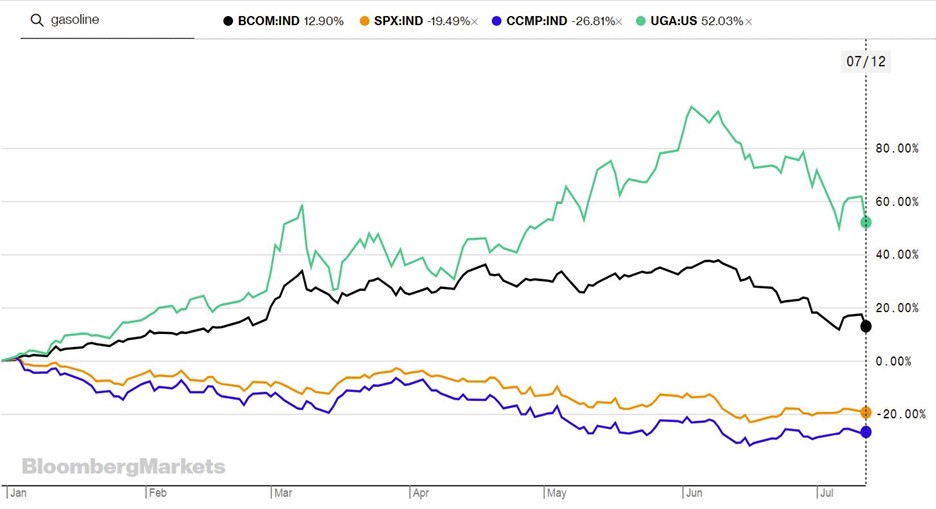
As we head into the second half of the year, it's essential to keep an eye on real assets. Real asset prices provide clues to what's happening in the global economy and can provide valuable insight. If commodity prices start to fall, it could indicate that a recession is on the horizon, or simply that we're seeing a pullback in a long bull market cycle.
Commodities are a volatile asset class, for which corrections of 20%-40% are common. The current drop in commodity prices and commodity-related stocks is one such correction.
Whenever the $USD rolls over and begins to fall, the next leg up in this significant commodities bull market will begin. We have stocks in a bear market, more Fed tightening on the way and inflation at 8%. On top of that, we have monetary policy that has caused stocks and bonds to sell off together—a development not seen since the 1990s.
What instruments are we watching right now?
Inflation may pose the biggest economic threat now. The economy is likely to test the boundaries of stagflation, although we are not discounting the potential for recession in the coming months either. We can safely say we are in a regime of lower growth and higher inflation, with CPI on tap.
June's CPI print is projected to come in at 8.8%, according to median Wall Street Journal forecasts. This would mark an uptick from May's 8.6% and is the exact opposite of what most investors and consumers are hoping to see. The only sign of cooling in the current June projections comes on the core CPI front, which will be released on Thursday and strips out energy and food costs.
Given these clues about stagflation, we think it makes sense to overweight tangible assets relative to bonds in your portfolio. Investors need to be nimble and position their portfolios accordingly to weather the inflationary storm. Commodity prices, on balance, should regain their uptrend shortly if we look at historical price volatility. Market volatility and rising inflation can erode purchasing power, and these factors should consider allocations in tangible assets. Alternative investments have become an essential part of portfolios, and if you do not have tangible assets within your asset allocation, even a tiny percentage, I would tell you that you need to buy some tangible assets now.
My daily blog has profitable ideas every week. The second-quarter earnings seasons start to coincide with the tradable range reset we follow at MarketGauge. Click here to subscribe.
 Get your copy of Plant Your Money Tree: A Guide to Growing Your Wealthand a special bonus here.
Get your copy of Plant Your Money Tree: A Guide to Growing Your Wealthand a special bonus here.
Follow Mish on Twitter @marketminute for stock picks and more. Follow Mish on Instagram (mishschneider) for daily morning videos. To see updated media clips, click here.
Mish in the Media
In this appearance on Business First AM, Mish talks about the big data week and what to watch for if the market is to bottom.
Mish discusses the best investments now and what strategy traders should use on TD Ameritrade.
Mish explains how the Fed has been behind the curve and what can happen as a result on Yahoo! Finance.
Join Mish tomorrow at 9am ET as she explores the two price levels that will determine the fate of the market in 2022. This brand new special episode of Mish's Market Minute airs exclusively on StockCharts TV.
ETF Summary
- S&P 500 (SPY): 372-386 new trading range to watch
- Russell 2000 (IWM): 170 support must hold
- Dow (DIA): 307 support and needs to clear 315
- Nasdaq (QQQ): Looking heavy unless it clears 297
- KRE (Regional Banks): 56 the 200-WMA, 60 resistance
- SMH (Semiconductors): 200 now interim support, 210 resistance
- IYT (Transportation): 211.90 support with resistance at 220
- IBB (Biotechnology): 129.50 resistance, 117 support
- XRT (Retail): 60.75 the 200-WMA, 57.50 support
Mish Schneider
MarketGauge.com
Director of Trading Research and Education






